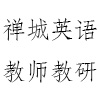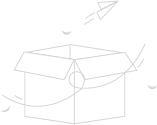-
Teaching Design of Unit 2
普通类 -
- 支持
- 批判
- 提问
- 解释
- 补充
- 删除
-
-
默认段落标题(请修改)...
上传版Teaching Design of Unit 2.docx
Teaching Design of Unit 2, Module 8
佛山市华英学校陈彩云
教研主题:Thinking map 在阅读教学中的运用
Author
Date and place
Duration
Learners
Chen Caiyun
8:10-8:50, May 20,2016 (Friday) 华英学校教学楼实验楼四楼录播室
40mins
students in
Class 1,Grade 8
Context
Type of the lesson
Resources
Teaching Tools
M8, U2
(the first period)
Reading
PPT presentation, graphic organizer, exercise sheet
multi-media
-
1. Prior Lessons and Conceptions
1. Students have learned the new words of this module.
2. Students have experienced object clause in Unit 1.
3. Teachers has introduced thinking map.
4. Students have learned some reading skills, such as note-taking and multiple reading and have been practicing on the skills.
-
2. Text analysis
The text is an email about a trip to Zhangjiajie. The language is not very difficult to understand. The difficulty is to understand the order of the events. The important point is to learn the text features.
-
3. Main Lesson Objectives:
With the help of thinking maps, students will be able to:
1. Understand the text features.
2. Understand the structure of a passage describing a trip experiences
3. Understand specific information in the reading material.
4. Understand the sequence of events.
-
4. Five Dimensions of Objectives Analysis
(五个目标维度)
I. Language skills(语言技能目标)
-----Micro skills:
To strengthen (have learned):
1. Identify the main idea of the reading
2. Identify the supporting details/sub-ideas of the reading
3. Practice scanning reading strategy, skimming reading strategy and note-taking strategy.
To acquire (will learn):
1. Identify the genre(体裁) of the reading
2. Identify the organizational structure of the reading
3. Identify the order of the events.
Ⅱ. Language focus(语言知识目标)
Vocabulary:
square, kilometer, shape, human, wake, wake up, somebody, about, path, pull, freshwater
Sentence Structures: Object clause.
Ⅲ. Affection(情感态度目标)
Develop love of the places of interest in our country by reading Betty’s email.
Ⅳ. Learning strategies(学习策略目标)
Learn to use thinking map to sequence, analyze and so on.
-
5. Theories & Techniques
Teaching theoretical basis: content-based instruction, backward lesson design
Teaching techniques: text structures, modeling, graphic organizer, turn-and-talk, formative assessment, etc.
-
6. Expected Evidence of Learning (Assessment)
Formative assessment:
1.Students will self-evaluate themselves in the exercises. Their responses will also help teacher to get an idea about whether students fully understand the reading.
2. The competition among groups is also an assessment.
3. The homework is another formative assessment, which will show students’ mastery of reading and cognitive strategies.
-
7. Procedures
-
Ⅰ.Before reading:
-
1. Revision: (2mins)
-
2. Leading in (5mins)
1. Watch a video.
Watch a video of Zhangjiajie and think what words can describe it, using a circle map.

2. Speak out the words describing Zhangjiajie.
(这里或许可以采取小组pk的形式鼓励学生多说多想)
3. Free talk
Free talk , using a bubble map: What do you know about Zhangjiajie?

4. Read
Read a passage and fill in the map.(请问这里是对课文进行阅读后,并填写哪个图呢?)
这个教学步骤,要看视频接着brainstorm, 又要看文章,还要填写bubble map, 5分钟是否能完成?而且文章似乎不是课文第一段?能否整合一下?
Purposes
1. Arouse students’ interest in the reading material.
2. To lead students into the reading topic.
3. Help students form logic thinking.
-
Ⅱ.While reading: (25mins)
-
1. Skim and learn
Skim the text and learn the text features.
Use a brace map and learn the structure of an email.

-
2. Number and match
Number the body of the email and match the paragraphs with the main idea.
(Para.1 is for connecting.)
(因为我在后面看到教学目标之一为帮助学生理解main idea,所以可能这要点拨一下学生如何判断原文中的主题句。或者如何总结主题的技巧。)
-
3. Skim and learn
Scan the whole passage and learn the structure of a passage about a trip.

-
4. Read and check.
Read Para. 2 and learn how to introduce a scenic spot, using a tree amp.

这里是否和前面的步骤有点重复了?只是强调了一个时态,其他内容都是一样的?
-
5. Read ,put in order and answer
Check the sentences T or F.
-
6. Read and fill.
Read Para3&4 and learn how to write the experiences of a trip, using a tree map.

7. Put the sentences in the right order.
8. Answer the questions.(我觉得三中温丰老师设计的thinking map 挺好的,能否借鉴一下,比直接回答问题会否好些?
9. Read Para.5 and learn how to write a trip plan, using a tree map.

10. Finish the sentences with right words.
11. Circle the words which tell the time order
Purposes (25分钟的教学设计里,要有效达至以下8个purposes,时间是否足够?)
1.help students learn the text features.
2. help students to learn the main idea of each paragraph.
3. help students learn the structure feature of a passage about a trip. (本处是否重复了?)
(没有重复,1 是写邮件的格式,3是body的结构)4. help students learn more how to introduce a scenic spot; help students understand the sentences.
5. help students learn more how to write trip experiences;
6.help students learn the order of the events and understand better the difficult sentences; (重点难句是哪些呢?)
(赞成,貌似教案中没有列举出重点句)
7. help student to know what to do when traveling.
8.. help students to understand words between lines.(有哪些句子需要学生明白言外之意的呢?)
-
Ⅲ. After reading:
-
Have a summary and self assessment.
-
Homework
(如果把homework的内容一早提出,当作本节课的情景设计,学生的学习目标是否更明确?)
Write an email to Nancy about your most unforgettable trip and send your homework to her emailbox 328182637@qq.com.
1.Choose a place and choose some important information, using a bubble map to help.
2. List what points you want to write, using a flow map to help you.
3. Write an email about the trip.
4. Check your email in points, expressions and connection. Also, check each other’s with your partner.
5. Send it to 328182637@qq.com.
我感觉这个作业设置得挺全面的,既有邮箱的书写格式的考察,也有对描述一次旅行的书写能力的检测。我的学生水平普遍不高,也参差不齐,所以我可能会考虑变成一个group work,作业以小组形式上交,做成一个小论文形式的装订本,组员可以分工,有负责画bubble map,有负责找图片的,有收集材料翻译的,有负责编辑的,最后小组展示。这样我的学生才每个人都有他能够力所能及的事情可做。当然,personal idea,见笑见笑
感觉这个作业设计很好,体现了个性和共性的交融,分工协作的结合,人人有事做。
-
Blackboard Design
-
-
- 标签:
- unit
- design
- of
- teaching
-
加入的知识群:






学习元评论 (0条)
聪明如你,不妨在这 发表你的看法与心得 ~